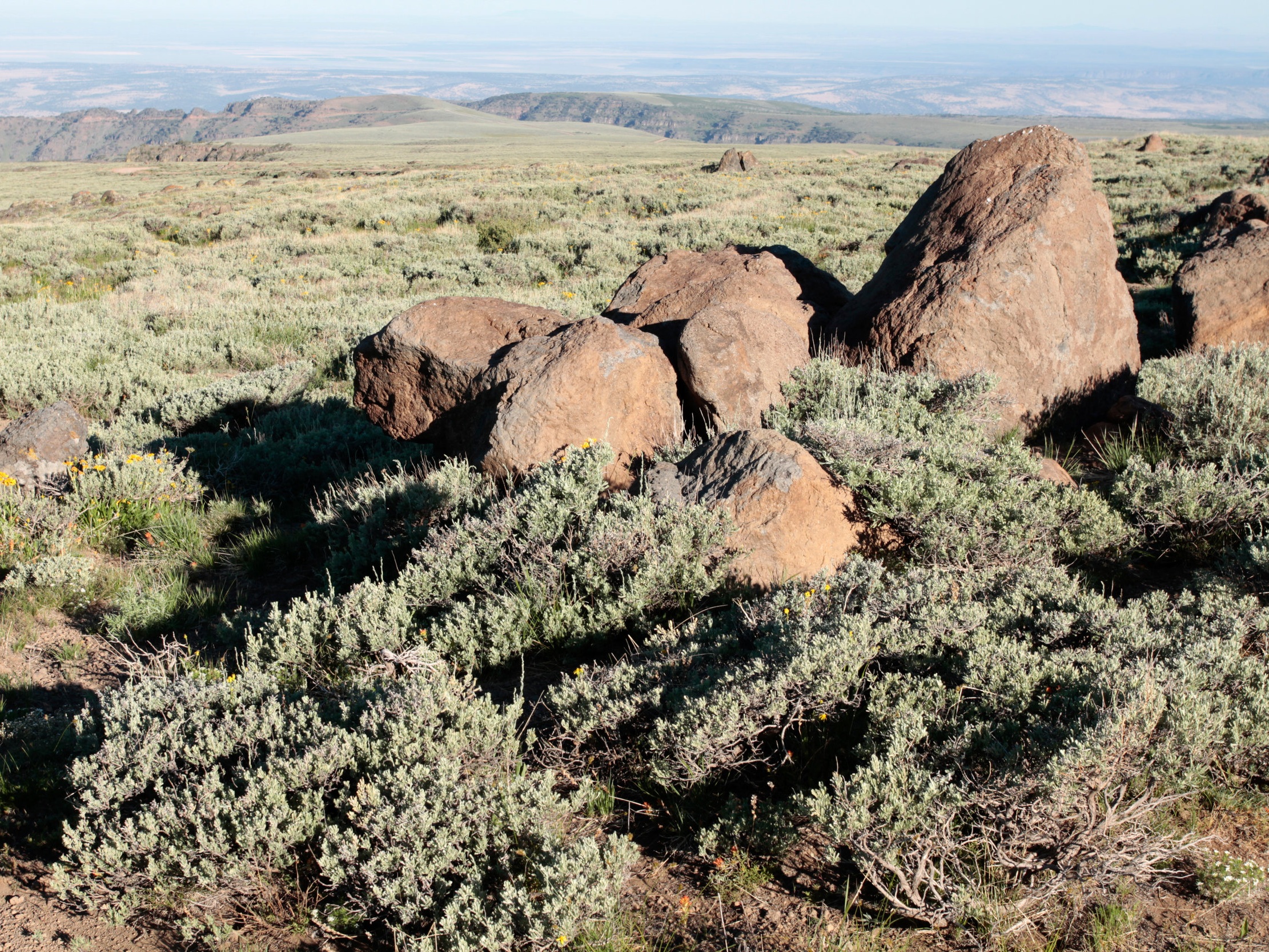Artemisia arbuscula (Low sage)
Low-growing mounded shrub up to 2 ft. tall with evergreen grayish-green leaves, flowering May to October though most often in spring, unlike other sagebrush species. Occurs on shallow clays and dry rocky soils; 2,000 to 12,000 ft. elevation. Adapted to a wide variety of habitats, from valleys and alkali basins to high mountain slopes. Often found in pure patches within larger stands of big sagebrush (A. tridentata) due to shallow clay or rocky soils. Occurs in arid salt desert scrub communities of Shadscale (Atriplex confertifolia) and Greasewood (Sarcobatus vermiculatus); also at higher elevations within pinyon-juniper and mountain shrub habitats. Occasionally root sprouts after disturbance. Highly palatable to deer, elk, sheep and pronghorn, especially in desert scrub communities during summer. Sage-grouse favor the patches of short, open habitat which occur within larger stands of taller and denser big sagebrush.
DISTRIBUTION / ADAPTATION
INFORMATION & ATTRIBUTES
Family: Asteraceae
Duration: Perennial
Growth Habit: Shrub/subshrub
Native Status: Native
Growth Form: Mounding
Mature Height: 16 in.
Bloom Color:
Fruit/Seed Color: Brown
Bloom Period:
Annual Precipitation: 7-20 in.
Drought Tolerance: High
Shade Tolerance: Intolerant
Elevation: 2,500-11,500 ft.
Fire Resistance: No
Nitrogen fixation: None
SOIL ADAPTATION
Coarse Texture: Yes
Medium Texture: Yes
Fine Texture: Yes
Salinity Tolerance: Medium
CaCO3 Tolerance: High
pH Range: 5.5-8.6
SEEDING NOTES
Seeds per Pound: 980,000
Seeding Rate: PLS lbs/acre
Season: Fall
Days to Germination:
VARIETIES & LOCAL ACCESSIONS
None


